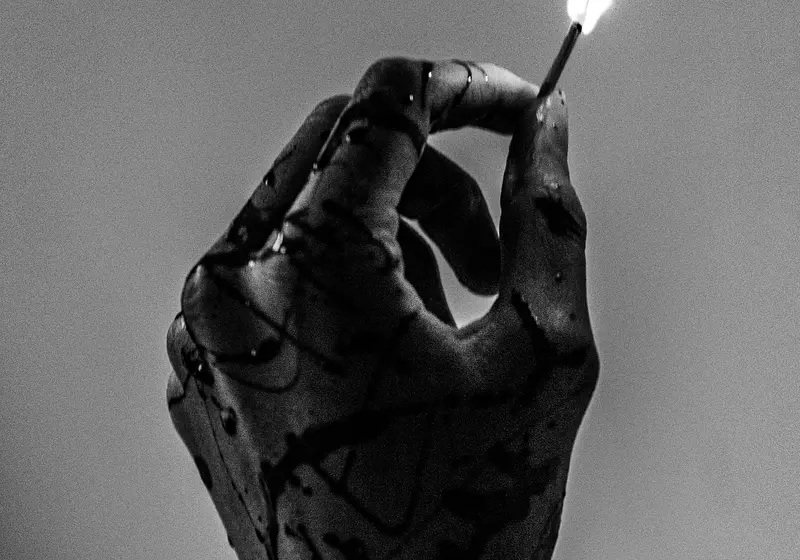TRIGGER WARNING: This article does talk about sensitive topics and deals with inner racism and colorism and may contain some graphic language (such as stereotypes and racial slurs).

Picture of me (for context)
Growing up as a young black girl, especially a “dark-skinned” young black girl, I was often the butt of everyone's joke, being called “Miss Celie” or “darkie” or even “slave”.
Or being given backward compliments like “you're pretty for your complexion”, “you don’t look like most girls with your complexion”, “are you foreign or mixed? Because your hair is so pretty!”. Being dark-skinned with loose curly hair was very odd to many people around me and from my community. Many people thought that if you were black (especially if you were “dark-skinned”) and didn’t have 4c hair, then you had to be mixed or at the very least not an American.
I had so many people assuming I was from a different country from simply looking at me, and then when I spoke they would be in shock and then try to argue me down about my ethnicity. And honestly? I never felt ugly or out of place until people kept pointing out how I looked, always making me feel less than.
But as I got older and became more into social activism and the complex history of oppression and how being oppressed shaped the beauty standards of the modern world, I realized that I am not alone. There are many other people of color- whether they're Asian, American, or Latin-American- that have experienced this same feeling that I felt.
Let us slide into your dms 🥰
Get notified of top trending articles like this one every week! (we won't spam you)The History of Colorism
Before diving into the history of colorism, we must first explain what colorism is. Colorism is the belief that one skin tone and certain features of that skin tone are superior to other skin tones. Typically, this belief means that the lighter you are, the better you are and if you have light-colored eyes with a loose hair texture, then you are even better than your darker-toned peers.
But before colonialism and Europeans took over Asia, the Americas, and many parts of Africa, beauty standards varied from country to country; having “fair” skin with long, blond hair and blue eyes and being thin wasn't the beauty standard. In fact, in lots of folklore in the Norwegian area, having blond hair and blue eyes was considered “abnormal” since it wasn't common at the time.
And being “fair-skinned” with pretty eyes wasn't the beauty standard in many countries, since there were so many different complexions and “communities” (whether these communities were tribes or villages or even empires).
So how did this come to be? When colonists from Europe (mostly from Britain, Spain, Italy, and France) colonized parts of Asia, Africa, Latin America, and North America, the standard of beauty shifted. The colonists thought they were superior to their captured and enslaved counterparts since they felt like the others were “savages” and “uncultured.” This belief in one race being superior to another helped to lead to the shaping of what was considered attractive. Many slaves and captives slowly began to want to look and be more like the people who were holding them captive, who had control over them.
They believed that if they looked like the ones above them, then they would have some more power. One of the biggest contributors to colorism in minority communities is The Willie Lynch Letter. While it is still debated on whether Willie Lynch was real or not- the premise of the letter is VERY real.
The Willie Lynch Letter states that by separating blacks and pitting them against one another, you’re able to control them better. And what better way to control them than by treating the lighter-skinned slaves better than the darker ones?
But the sad truth is that although the infamous letter is well known in America, it can be seen in minority groups all over the world. The belief that treating one skin color superior to the other would create division amongst the people in that community and make them easier to control can be seen very thoroughly within the Latin American and Asian communities too. Permanent hair straightening products, skin whitening products, and other colorist/racist products plague many communities of people of color. Not just America.
The belief that if you have light skin with blue, green, or hazel eyes and wavy or loose curly hair, then you are pretty and even prettier than darker-skinned individuals is still a very real mindset within many people of color all over the world.
Take the Quiz: Which Indian city is the perfect holiday spot for you!?
Let's match you with an Indian city that you would love!
The Media and Colorism
I remember my sister watching TikTok and how toxic it was when one of the content creators said, “I'm light-skinned with blue-green eyes and loose curly hair — if I wanted to have your man then I could”. That statement was just so rude and condescending that it made me shudder in disgust.
How could you say something so elitist? And so blatantly rude and to think that it's okay? Then get mad when people call you out on it?
Don't get me wrong. I'm all for self-confidence and boosting one another up- especially young women showing love and support to other young women. But I can not support another young woman who feels like she has to bash and drag down other women (especially a group of women who already feel so much hate and scrutiny within this society).
Right is right and wrong is wrong, and, even with this article, I intend to inform and bring awareness, not to bash, harass, and antagonize others or to spread hate.
But that certainly isn’t the last time I heard someone say something so rude and colorist on TikTok. I had another younger sister show me a TikTok of these three young, black sisters and people making comments like “you guys are so ugly” and “y'all would be prettier if you had light skin” or even “light skin girls are prettier” and many other racist, profane names that for the sake of the integrity of this article I will refrain from mentioning.
This type of toxic behavior only reinforces the negative stereotypes and colorist behavior in minority communities.
Not to mention having many influential people with large fan bases, like Lil Wayne and Kodak Black, who say things like “dark-skinned girls are ugly” and “I would never want a child who looks like me.” Or even guys, stating time and time again on social media (mostly TikTok, Twitter, and Instagram — or as I like to call them the Triple Trouble) state their very blatant distaste for darker-skinned women by not only calling them ugly but also calling them things like “Harambe”, “burnt”, and way worse.
I know that people may not always realize just how ignorant or how hurtful they're being, but, in a world where women and men of color already have a hard time with accepting who they are- why would you, as a person of color too, add to that feeling of not being enough? Especially on a platform where millions of people see it daily? That is just unnecessary.
That is someone's child, another human being that you are so liberally tearing down and embarrassing publicly. They have feelings and emotions too.
I understand that preference is a thing and that people have a right to their opinion. You can state your opinion and have a preference without making someone else feel like they're worthless. Because nothing hurts more than when someone who looks like you tears you down in the most humiliating way possible.
Mejorar La Raza aka “Improve the Race”
“Mejorar La Raza”, which means “Improve the race”. This saying is extremely popular in Latin-American countries, although it easily applies to Native Americans, Asians, and Blacks as well. Mejorar la Raza is when someone of native descent in a Latin-American country marries and has children with white people to try to whiten their lineage so that their offspring will be “better” than they are.
It's a racist belief that if your child has white blood or if you assimilate and marry someone who is white, then your life is a lot better. This is the same reason that a lot of Asians marry (or at least to) whites as well.
How does this relate to colorism? Easy. They're marrying someone of a lighter complexion in hopes of having lighter children so that they can be better.
They don't want their children to look like them, since "the lighter you are, the better you are" is a widely accepted and known belief. While it doesn't make it right, it's hard to get rid of hundreds of years of thinking. Colorism, just like racism, is taught and bred into people, and it is hard to make it completely disappear.
But Mejorar La Raza isn't just marrying and having children with white people — which is why I said it doesn't only apply to Latin American countries. It also applies to people trying to get lighter skin by using whitening products, permanently straightening their hair (mostly in the Asian communities, especially popular in Japan and Korea), and using texturizers and dying their hair to try and become more like the standards of beauty.
While on one hand, it is a type of survival technique in us as humans- to try and become more like the majority to take and fit in, it is also the result of racist thinking planted in generations of people of color by those who oppressed them and told them they were inferior. This racist thinking is what has led us to colorism and the division amongst minority groups today.
And while some may not see it, there is definitely a gap and mistreatment of minority groups and how they are treated and represented in the media and society. A great example would be the Philippines and how most of their mainstream models have lighter skin and silky straight hair with large, round eyes. Most people outside the Philippines do not even know that dark-skinned Filipinos exist because they are so heavily discriminated against (and I am referring to dark-skinned and not brown Filipinos).
What The Future Holds
With everything that I have said in this article and have discussed over what became a little lengthier than my original intention, I just want to end this article by saying that we are the change that we seek in the world.
While everyone may not realize the harm and danger of colorism and how it impacts those around us, it only takes a few to change many. Colorism, as stated before, isn't natural. It is taught from generation to generation, but this generation can change that.
We are the future, and we do not have to be like those before us. This is meant to encourage and uplift you all, not to try to pressure you into trying to change the world (okay, and I thought an inspirational speech would be the perfect way to wrap up this article). But seriously, Colorism may always exist, but it definitely does not have to be the norm. It's okay to call out colorist behavior and to be like “no, that's not okay”.
Please remember this the next time you see someone being a colorist to you or others. Thank you.















